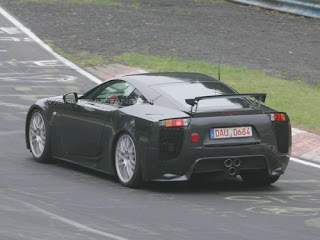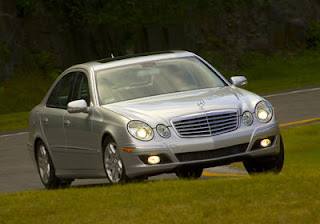
When it comes to auto insurance, you want to be adequately covered if you get in an accident but you don't want to pay any more than you have to. So how can you navigate your way through this murky subject?
Keep telling yourself there is money to be saved. How much? Hundreds, even thousands, per year. For example, one of our editors typed all of his insurance information into a comparative insurance service. The quotes (for very basic coverage on two old cars) ranged from $1,006 to $1,807 — a difference of $801 a year. If you're currently dumping thousands into your insurance company's coffers because of a couple of tickets, an accident or a questionable credit rating, shopping your policy against others may be well worth the effort.
5 Important steps
Look at it this way — you can convert the money you save into the purchase of something you've desired for a long time. Hold that goal in your mind.
1) Visit your state's department of insurance Web site. Although you may not be familiar with it, your state, and every state, has a department of insurance. Most departments have Web sites, and many publish "consumer complaint ratios" for all of the insurance companies that sell policies in their state. This ratio tells you how many complaints a car insurance company received per 1,000 claims filed.
Both experts recommended that consumers use complaint ratios to screen prospective insurers. "Just because they're a big name doesn't mean that they'll be a 'good neighbor' or that you'll be 'in their hands,'" Heller noted.
If you've done your homework, you should already have a list of car insurance companies with the lowest premium quotes. Now jot down the companies with the lowest (or best) complaint ratios. Then, compare your two lists — the companies that rank best on both lists merit your strongest consideration.
If you can't find complaint ratios for your state, Heller recommends examining the complaint ratios published by other states. Keep in mind that a single insurance company's practices can vary significantly from state to state — a subpar ratio in one state doesn't necessarily mean the situation is the same in your state. But watch for general trends. If an insurer is getting a lot of complaints in several other states, you probably don't want to get involved with this company. The I-CAN Web site provides links and contact information for every state's department of insurance.
Also note that insurance department Web sites often provide basic rate comparison surveys. These can give you a rough idea of which insurers might interest you on a financial basis without the hassle of typing in all your personal information (as you must when you use one of the online quote sites).
2) Find out which insurers body shops recommend. One of the best ways to identify reliable insurers, according to Howard, is to contact local body shops that you trust and ask for their recommendations. Body shop managers have a unique perspective to offer, since they regularly interact with insurance adjusters. They know which companies have the smoothest claim processes, which affects how quickly the work can be completed on a damaged vehicle. And they know which companies are pushing aftermarket parts, in lieu of genuine original equipment manufacturer (OEM) parts, to cut costs.
3) Check the J.D. Power Ratings. J.D. Power and Associates collects data from individual policyholders nationwide and rates them according to coverage options, price, claims handling, satisfaction with company representatives and the overall experience. A quick visit to the J.D. Power Consumer Center will give you a feel for how the major carriers stack up. J.D. Power also publishes an annual survey of major auto insurers — Amica and Erie have finished at the top for the last three years. These are also companies that Howard recommends: "Erie is sold by independent agents, who are very knowledgeable about the product. I like their claims handling approach. Almost all other companies look at a claim and find a way to not pay it. Erie and Amica will look at it and try to find a way to cover it."
4) Consider insurers' financial strength ratings. As a final check, you can take a look at the A.M. Best and Standard & Poor's ratings. Both companies publish financial strength ratings for all insurance companies — these "measure" an insurance company's ability to pay out a claim (they have nothing to do with the way a company treats its customers).
For the general consumer, looking up these ratings is only a formality, since most of the well-known carriers are going to be a safe bet. Moreover, independent agents would be unlikely to recommend a company with dubious financial standing. Still, if you're considering a smaller, unfamiliar insurance carrier, you might consider this research time well spent. Insurance companies often provide this information on their Web sites, but if not, you can run a search at the A.M. Best and Standard & Poor's sites.
The A.M. Best rating is expressed as a letter grade from A++ (the highest) to D. Some companies may be assigned ratings of E (indicating regulatory action regarding the company's solvency), F (in liquidation) and S (suspended). In any case, you should only work with companies that have at least a B+ rating.
The Standard & Poor's ratings range from AAA (the highest) to CC. Additionally, some companies receive ratings of R (under regulatory supervision) and NR, which means "not rated." The letter grades might be modified by a plus or minus mark. Consider only those companies that have at least a BBB rating.
5) Still confused? Consider working with an agent. It used to be that everyone purchased auto insurance from an agent, but now, car insurance companies like Esurance, Geico and others allow you to purchase insurance directly — over the phone from a customer service representative or online. Still, many of the major players have preserved their national networks of local agents — even if you use State Farm's or Allstate's Web site, you will still be assigned a local agent.
There are two kinds of agents:
a) the captive agent, who represents only one insurance company (major carriers like AAA, Allstate and State Farm sell policies through captive agents).The main advantage in having your own agent is that this person has a vested interest in keeping you happy. Accordingly, he can become familiar with your situation and guide you toward a suitable policy. Howard favors the use of agents and advised, "Don't rule out direct providers, but my personal preference is to have an agent, preferably an independent agent, write your policy for you.... An independent agent would become aware of less advantageous conditions with one company [and help you move to another]. You can change carriers without changing your agent. I encourage consumers to develop a relationship with their agent."
b) the independent agent, also known as a broker, who represents several insurance companies and therefore does not have a vested interest in selling you a policy from one particular company.
The prospect of good working relations with an agent may help you to make a decision: When Heller purchased auto insurance for the first time, two insurers gave him similar quotes, but he went for the slightly higher one because the agent had been highly recommended by a friend. "You shouldn't go direct without always checking out other options," he said.
But, he cautioned, "Never feel pressured by a broker or an agent. Take the time to talk with an agent or a broker as well as do your online research. You may not need an agent — you may find a better deal with a company that operates direct."
Independent agents sometimes charge a fee for their services, but you may be able to negotiate that. You should agree upon any fee in writing before making a purchase. Look for agents who are certified by Independent Insurance Agents of America (Big "I") or Professional Insurance Agents (PIA).
Of course, we know you have better things to do with your time than think about car insurance. Realistically, most people won't be able to do everything on this list before choosing an insurance carrier. But if you feel that you've been burned during the claims process in the past, consider at least one or two of these suggestions — you'll thank yourself if you're ever involved in another accident.






















